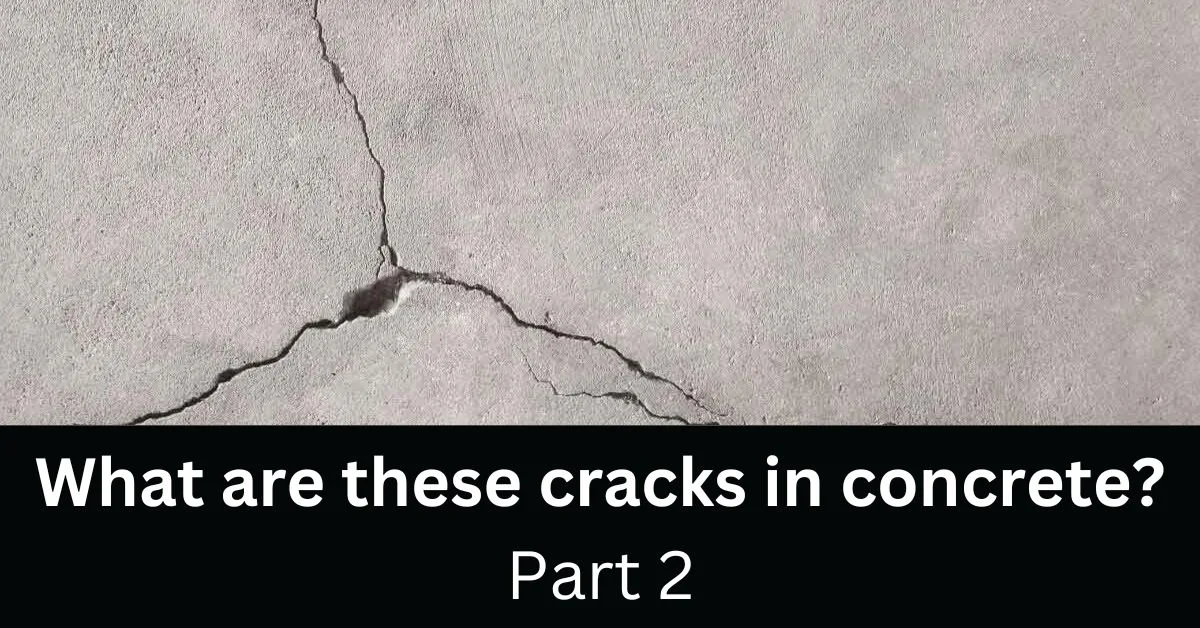This is part 2 of the series of articles on cracks in concrete. In this series, we are going to discuss what concrete cracks are, what causes them, and how to control them.
If you are new to this series, please refer to Part 1 here to get an initial understanding of different concrete crack types and classifications.
Table of Contents
Best Practices for Preventing Concrete Cracks
Proper Design and Planning
To prevent concrete cracks, proper design and planning are essential.
- Use of appropriate concrete mix for specific applications
Using the appropriate concrete mix for specific applications is crucial in preventing concrete cracks. The mix design should consider factors such as environmental conditions, load requirements, and expected service life.
- Adequate reinforcement
Adequate reinforcement is essential in preventing structural cracks in concrete. Proper spacing, alignment, and placement of reinforcement are critical in ensuring the durability and integrity of the concrete structure.
- Appropriate placement and finishing techniques
Proper placement and finishing techniques help in minimizing surface cracking in concrete. The concrete should be placed and finished using appropriate tools and techniques to ensure a smooth and uniform surface.
Maintenance and Repair
Proper maintenance and repair are necessary to prevent concrete cracks.
- Importance of regular inspections and maintenance
Regular inspections and maintenance can help in identifying cracks and other defects in concrete structures. Timely repair of these defects can prevent further damage and prolong the service life of the concrete structure.
- Immediate repairs of minor cracks to avoid further damage
Minor cracks in concrete should be repaired immediately to prevent them from expanding and causing further damage. The repair technique used should match the severity and location of the crack to ensure a durable and long-lasting repair.
How to Fix Concrete Cracks
Identifying the severity of the crack
Before fixing concrete cracks, it’s essential to identify the severity of the crack. Hairline cracks are less than 1/8 inch wide, and typically, these are not a major concern. However, if the crack is wider than 1/8 inch, then it’s important to take immediate action. Large cracks can indicate a more serious underlying problem and require a thorough inspection by a structural engineer.
Types of Repair Methods
When it comes to repairing concrete cracks, there are various methods available, including epoxy injection, polymer modified concrete, routing and sealing, and more. Each method has its own advantages and disadvantages. Here are some of the most commonly used methods:
- Epoxy Injection
Epoxy injection is a popular method for repairing cracks in concrete. It involves injecting epoxy resin into the crack, which then hardens and seals the crack. This method is best used for structural cracks and can help to restore the structural integrity of the concrete. Epoxy injection is also effective at preventing water infiltration and can be used to repair cracks in a variety of concrete structures.

- Polymer Modified Concrete
Polymer modified concrete (PMC) is another effective method for repairing concrete cracks. PMC is a mixture of Portland cement, aggregates, and polymer resins. This method is best used for larger cracks or areas of damage, as it is stronger and more durable than traditional concrete. PMC can also be used to repair spalled or damaged concrete surfaces.

- Routing and Sealing
Routing and sealing is a method that involves creating a groove or channel along the crack and then filling it with a sealant. This method is best used for non-structural cracks and can help to prevent water infiltration. Routing and sealing is a relatively simple and cost-effective method for repairing concrete cracks.

Materials used for repairing concrete cracks
The materials used for repairing concrete cracks depend on the type and severity of the crack. For hairline cracks, a simple crack filler can be used, while wider cracks require more robust materials such as epoxy or polymer modified concrete. Other materials used for repairing concrete cracks include hydraulic cement, latex-based sealants, and concrete resurfacing products.
Overall, the method of repair depends on the severity of the crack and the desired outcome. It is essential to properly identify the type of crack and consult with a professional before choosing a repair method. Additionally, it is important to use high-quality materials and follow the manufacturer’s instructions to ensure a successful repair.











